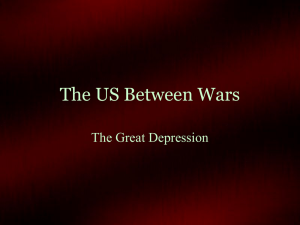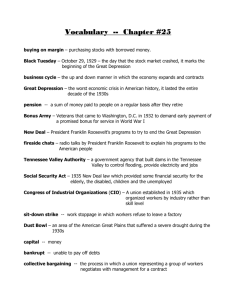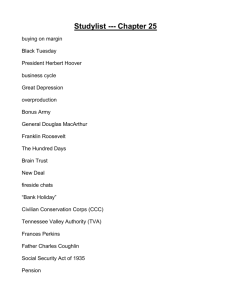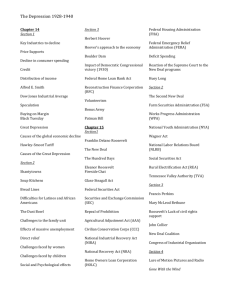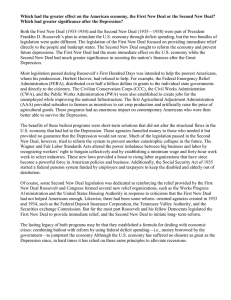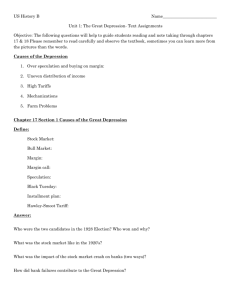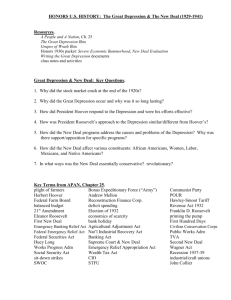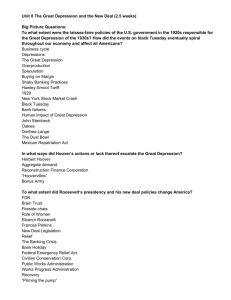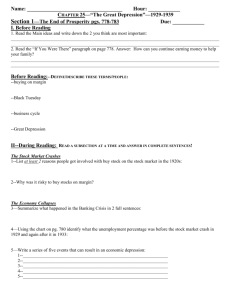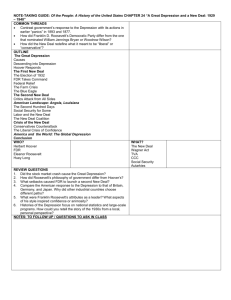Name: Date: / / The Great Depression Internet Lesson October 29
advertisement
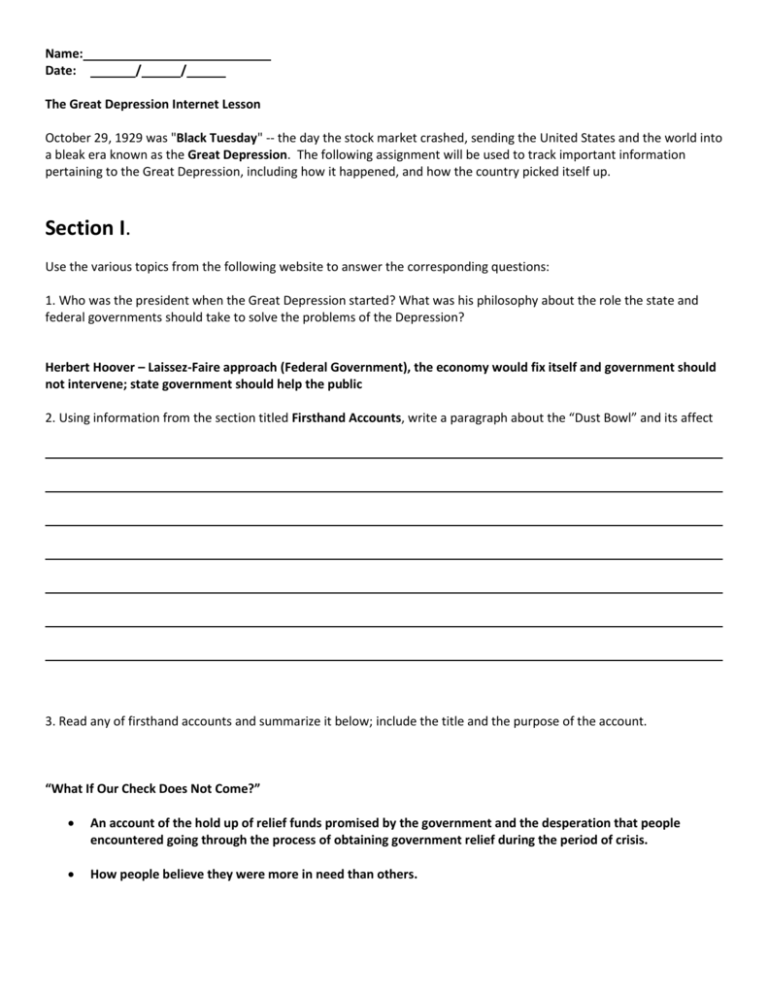
Name: Date: / / The Great Depression Internet Lesson October 29, 1929 was "Black Tuesday" -- the day the stock market crashed, sending the United States and the world into a bleak era known as the Great Depression. The following assignment will be used to track important information pertaining to the Great Depression, including how it happened, and how the country picked itself up. Section I. Use the various topics from the following website to answer the corresponding questions: 1. Who was the president when the Great Depression started? What was his philosophy about the role the state and federal governments should take to solve the problems of the Depression? Herbert Hoover – Laissez-Faire approach (Federal Government), the economy would fix itself and government should not intervene; state government should help the public 2. Using information from the section titled Firsthand Accounts, write a paragraph about the “Dust Bowl” and its affect 3. Read any of firsthand accounts and summarize it below; include the title and the purpose of the account. “What If Our Check Does Not Come?” An account of the hold up of relief funds promised by the government and the desperation that people encountered going through the process of obtaining government relief during the period of crisis. How people believe they were more in need than others. 4. Briefly describe (mood, attitude, etc.) at least 5 of the photographs taken during the Great Depression. 5. The Great Depression lasted from 9,000 their jobs, and 1929 to banks closed, wages decreased by 86,000 1939 60 . During that time %. 15 million People lost businesses failed. 6. What was the Bonus Army? How did President Hoover respond to the Bonus Army? Approximately 20,000 World War I veterans gathered in Washington D.C. (1932) to force early payment of a promised bonus for wartime service Government refused to pay early (not to be paid until 1945). Hoover had General MacArthur remove them from Washington (burnt the Hooverville at Anacostia) after not dispersing after the Patman Bill was defeated in Congress Section II. 7. Franklin D. Roosevelt’s promise of a “New Deal” for the American people included: Public power Old age pensions & unemployment insurance Repeal of prohibition Regulation of the stock exchange 8. Listen to Franklin D. Roosevelt’s 1st Fireside Chat. What was Roosevelt’s purpose of this broadcast? Reassure American’s that the banks were safe, and that spending money and saving money would be a benefit to the American economy. 9. What were the first three things Roosevelt did when he became president? 1) Emergency banking bill: Offered financial help to private bank owners. 2) Federal Relief program: Encouraged Congress to set aside 500 million dollars for federal relief and grants to states. 3) Approved funding for: Civilian Conservation Corps (CCC): Employed over 2.5 million young men – improved Infrastructure and Public areas Home Owners Loan Corporation (HOLC): Offered necessary assistance to mortgagors and homeowners. Public Works Administration (PWA): Generated billions into construction *Programs most benefited disadvantaged Blacks, Latinos, and others. Restored Americas confidence in the government.* 10. Read through the New Deal/Alphabet Soup Programs, established under Franklin D. Roosevelt. Identify the following by name and completely fill in the question. 1) 2) Federal Deposit Insurance Company It prevents people from losing their money if their bank goes under. Federal Emergency Relief Act Distributed direct relief to unemployed. 3) Federal Housing Administration would not lose their homes. (FHA): Furnished loans for home mortgages so that people 4) Securities and Exchange Commission stocks, bonds, and further securities. (SEC): This commission was first established to standardize 5) Social Security Act : In response to critics, it provided pensions, unemployment insurance, and aid to blind, deaf, and disabled. 6) Tennessee Valley Authority : (TVA): Renovated existing dams, constructed 20 new ones in the Tennessee Valley, created thousands of jobs, and provided flood control and Hydro-electric power. It is still in effect today. 7) Works Progress Administration (WPA): Employed 8.5 million workers in construction and other jobs, but more importantly provided work in arts , theatres , and literary projects. 8) Civilian Conservation Corporation (CCC): Put men, ages 18-25, to work building roads, developing parks, planting trees, helping in soil erosion, and helping with flood-control projects. 9) Wagner Act busting tactics by management 10) Fair Labor Standards Act child labor . : (NLRB): Allowed workers to join unions and outlawed union : provided workers with minimum wage, and discontinued
